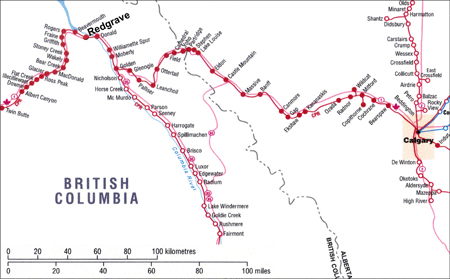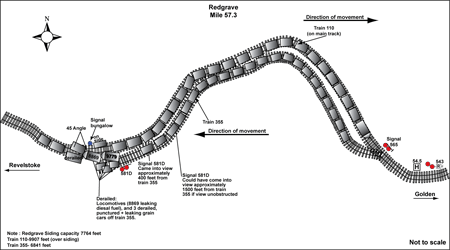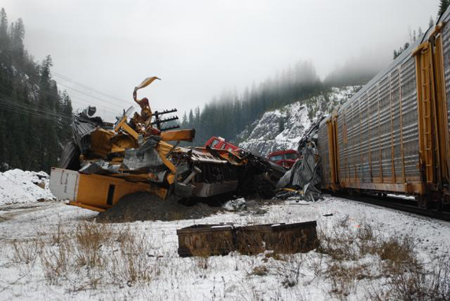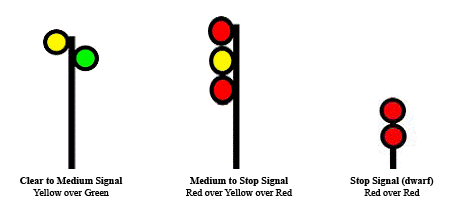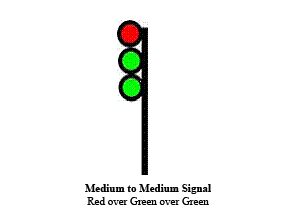Main-track train collision
Canadian Pacific train no. 355-429 and
Canadian Pacific train no. 110-30
Mile 58.10, Mountain Subdivision
Redgrave, British Columbia
The Transportation Safety Board of Canada (TSB) investigated this occurrence for the purpose of advancing transportation safety. It is not the function of the Board to assign fault or determine civil or criminal liability. This report is not created for use in the context of legal, disciplinary or other proceedings. See Ownership and use of content. Masculine pronouns and position titles may be used to signify all genders to comply with the Canadian Transportation Accident Investigation and Safety Board Act (S.C. 1989, c. 3).
Summary
On 30 October 2009 at about 2225 Pacific Daylight Time, Canadian Pacific Railway Train 355-429 operating westward on the signalled siding track at Redgrave, British Columbia, on the Mountain Subdivision, side-collided with eastbound Canadian Pacific Railway Train 110-30 that was stopped on the main track. As a result of the collision, two locomotives and six cars derailed. There were no serious injuries. Approximately 3000 gallons of diesel fuel spilled.
Factual information
On 30 October 2009, a meet between westbound Canadian Pacific Railway (CPR) Train 355-429 (Train 355) and eastbound CPR Train 110-30 (Train 110) had been planned for the siding at Redgrave, British Columbia, Mile 57.3 of the Mountain Subdivision (see Figure 1).
At 2218,Footnote 1 Train 110 stopped on the main track, clear of the signal at the east siding switch at Redgrave East, awaiting the arrival of opposing Train 355. The tail end of Train 110 was extended beyond the west siding switch at Redgrave West because Train 110 was longer than the siding. Train 355 was lined into the siding.
At 2220, with Signal 565 (the controlled signalFootnote 2 at Redgrave East) just coming into view, Train 355 received an audible report over the radio from the hot box and dragging equipment detector (HBD)Footnote 3 at Mile 54.5. The HBD audible report for Train 355 indicated an axle count that did not correspond with the crew's train information. Subsequently, as required by CPR's special instruction to General Rule C (i) of the Canadian Rail Operating Rules (CROR), the crew discussed this information between themselves. After a brief discussion, in accordance with Section 5 of CPR's General Operating Instructions (GOIs), the crew sought further clarification by checking its documentation and calling the rail traffic controller (RTC) and the crew of Train 110.
Train 355 had passed two previous HBDs that provided the same axle count as the one given at Mile 54.5. The crew did not take exception to the information provided at the previous detectors. The total axle count that was broadcast by all three HBDs was 458 axles. The axle count information that the crew of Train 355 obtained during the crew-to-crew transfer at Field was 478 axles. The consist information available to the crew reflected a total axle count of 458.
Despite the light rain and fog at the time, there was no indication that weather conditions were affecting the crew's visibility. At 2222, Train 355 passed Signal 565 and diverged into the siding at Redgrave East, travelling at approximately 29 mph (see Figure 2). This speed was maintained through the siding. The conductor did not question the locomotive engineer's train handling decisions through the siding. At 2225, Train 355 exited the left-hand curve (in the direction of travel) approaching Signal 581D, at Redgrave West. The view of the signal was limited to about 400 feet because of the presence of Train 110 on the adjacent main track. The crew observed the Stop signal indication and noted that the tail-end of Train 110 extended beyond the switch to the west on the main track. An operator-initiated emergency brake application was made. Train 355 continued past the signal and through the switch, striking the side of stationary Train 110 while travelling at about 22 mph.
Train 355's lead locomotive, CPR 8869, came to rest leaning at a 45-degree angle to the north. The second locomotive, CPR 9779, derailed upright, and 3 cars, the 3rd to 5th (loaded grain hoppers), derailed upright. Three cars from Train 110, the 78th to the 80th, derailed. Two cars on the north side of the main track, and one on the south side. The derailed cars from Train 110 were multilevel auto carriers (see Photo 1). Both crew members of Train 355 were taken to hospital in Golden, British Columbia, and were released early the next day.
Diesel fuel leaked in the surrounding area, and some grain was spilled. An environmental consulting company was dispatched to the site. Spilled diesel fuel and other fluids from the locomotive were removed, as was most of the grain. The environmental impact was minimal.
Weather information
At the time of the occurrence, the weather was foggy and raining, with winds from the south at 7 km/h. The temperature was 2°C.
Train information
Train 355 comprised two head-end locomotives and one tail-end remote locomotive hauling 110 hopper cars loaded with grain. The train weighed 13 994 tons and was 6841 feet in length.
Train 110 comprised two head-end locomotives and one mid-train remote locomotive hauling 97 loaded mixed-freight cars. The train weighed 8605 tons and was 9907 feet in length.
Crew information
The crew of Train 355, a locomotive engineer and a conductor, commenced duty at 1900 on 30 October 2009 at Field, British Columbia, Mile 0.0 of the Mountain Subdivision. The crew of Train 110, a locomotive engineer and a conductor, commenced duty at 1640 on 30 October 2009, at Revelstoke, British Columbia, Mile 125.7 of the Mountain Subdivision.
All crew members were qualified for their respective positions and met company and regulatory fitness and rest standards.
Inspection of passing trains
CROR Rule 110, "Inspecting Passing Trains and Transfers" specifies (in part):
When duties and terrain permit, at least two crew members of a standing train ... must position themselves on the ground on both sides of the track to inspect the condition of equipment in passing trains....
The crew of Train 110 conducted the inspection of Train 355 from their locomotive cab. They did not inspect both sides of Train 355 from the ground, although their duties and the terrain permitted.
Recorded information
A forward-facing camera had been mounted on the exterior of the lead locomotive of Train 355. A review of the video footage from that camera confirmed the signal indications (Figure 3) as follows:
- a Clear to Medium (yellow over green) indication was displayed on Signal 543 (that is, the advance signal to Redgrave East);
- a Medium to Stop (red over yellow over red) indication was displayed at controlled Signal 565 at Redgrave East; and
- a Stop (red over red) indication was displayed on Signal 581D, the signal governing westward movements from the siding to the main track, at Redgrave West.
Railway signal logs were also reviewed. The logs confirmed that there was a proper progression of signals and that there were no discrepancies with the functioning of the signal system.
CROR and company rules for signals
CROR Rule 34, "Fixed Signal Recognition and Compliance," paragraphs (a) and (b) specify (in part):
- The crew on the controlling engine of any movement and snow plow foreman must know the indication of each fixed signal ... before passing it.
- Crew members within physical hearing range must communicate to each other, in a clear and audible manner, the indication by name, of each fixed signal they are required to identify. Each signal affecting their movement must be called out as soon as it is positively identified, but crew members must watch for and promptly communicate and act on any change of indication which may occur.
CROR Rule 427, "Medium to Stop Signal," specifies the following:
Proceed, MEDIUM speed passing signal and through turnouts, preparing to stop at the next signal.
CPR's BC Interior Service Area Revelstoke Summary Bulletin No. RSB: 04-09 states (in part):
On Shuswap and Mountain Subdivisions, all controlled block signals and their advance signals must be voiced over the standby radio channel. The broadcast must include:
- the train designation and the name of the advance signal to the controlled location; and
- the train designation and the name of the signal at each controlled location.
In this occurrence, the indication of the advance signalFootnote 4 to Redgrave East, Signal 543, was communicated within the locomotive cab and over the radio. The indication of the controlled block signal at Redgrave East, Signal 565, was not communicated over the radio. The crew believed that the signal was Medium to Medium (see Figure 4).
CROR Rule 424, "Medium to Medium Signal" specifies the following (in part):
Proceed, MEDIUM Speed (not exceeding thirty miles per hour), passing signal and through turnouts, approaching next signal at MEDIUM speed.
Subdivision and track information
The Mountain Subdivision comprises single and double main track that extends between Field and Revelstoke. Train movements are governed by the centralized traffic control (CTC) method of train control, as authorized by CROR, and are supervised by a RTC located in Calgary, Alberta.
In the vicinity of Redgrave Siding, the track is designated as Class 3 track according to the Railway Track Safety Rules. The maximum authorized timetable speed is 35 mph for freight trains on the main track and 30 mph on the siding track. At the time of the accident, there were no temporary slow orders in effect within the immediate area.
The track comprised a single main track situated in an east–west direction, ascending 0.8 per cent to the west. The rail was continuous welded rail, and the ballast consisted primarily of crushed rock to an average depth of 8 inches. The cribs were full, and the shoulders extended approximately 18 inches beyond the tie ends. No significant track defects were noted in the last inspection conducted in October 2009. The track was considered to be in good condition.
Centralized traffic control
CTC uses interconnected track circuits and signals in the field. Computer displays and controls are installed in the RTC office. Signals are actuated by the presence of a train. Signal indications convey information to train crews specifying the speed at which they may operate and how far they are permitted to travel. In addition, signal indications provide certain protections against other conditions, including (for example) if the blockFootnote 5 ahead is occupied, a rail is broken, or a switch is left open.
Crews must be familiar with the signal indications specified in CROR. Crews are trained, tested, and qualified at periodic intervals according to industry rules and Transport Canada requirements. Crews are required to control their trains in accordance with those rules. If a crew does not respond appropriately to a Stop signal or other point of restriction, CTC does not provide any form of automatic enforcement to slow or stop a train before it passes that signal.
In the RTC office, track occupancy is shown on the RTC's computer screen. Track occupancy normally indicates the presence of a train, but can also be an indication of unauthorized track occupancy or an interrupted track circuit (for example, a broken rail or a switch left open). The RTC can control certain signals and can either set them to Stop or request that they display permissive indications. When an RTC requests signals for trains, the signal system determines how permissive the signals will be based on the presence of other track occupancies.
Positive train control
"Positive train control" (PTC) refers to a developing train control technology that may prevent some train collisions by positively enforcing points of restriction. For example, train crews would be alerted to potentially dangerous situations such as approaching a Stop signal too quickly. If an adequate response is not initiated by the crew, PTC will automatically slow or stop the train.
In the United States, PTC has been on the National Transportation Safety Board's "most wanted" list of safety improvements since 1990. The issue was highlighted in 2002 when a freight train and a commuter train collided head-on in Placentia, California. It was further reinforced when, on 12 September 2008, a collision between a Metrolink passenger train and a Union Pacific freight train in California, resulted in 25 fatalities and more than 135 serious injuries. This last accident prompted the passage of the Rail Safety Improvement Act of 2008 which mandates that, by 2015, PTC be installed on all corridors on which passengers or hazardous materials are transported in that country.
The TSB has noted the benefits of positive enforcement associated with PTC in a number of recent investigations (R07E0129 and R08W0058).
In Canada, a proximity detection device was developed and put into use after the 1996 collision on the Quebec North Shore & Labrador Railway (TSB report R96Q0050). The proximity detection device can trigger penalty braking if a train crew or track unit operator does not acknowledge the alert warning status when they come within a predetermined distance from other movements. However, no similar systems, except for limited trials, have been implemented on other Canadian railways.
Related TSB recommendations
During the investigation into a train collision involving two CPR trains near Notch Hill, British Columbia, (TSB file No. R98V0148) the Board determined that backup safety defences for signal indications were inadequate and that distraction attributable to noise significantly affected the communication of safety-critical information between crew members in the locomotive cab. The Board recommended that
the Department of Transport and the railway industry implement additional backup safety defences to help ensure that signal indications are consistently recognized and followed.
Transportation Safety Recommendation R00-04
Transport Canada (TC) initially supported the intent of that recommendation and increased its compliance monitoring of activities related to signal recognition. TC is currently assessing the results of its monitoring activities to determine possible further action. However, the action taken to date does not address a backup safety defence to ensure consistent recognition of signal indications, and the TSB recommendation is currently assessed as Unsatisfactory.
In another TSB investigation (R99T0017), the Board noted that, beyond the requirement for installation of survivable locomotive event recorder systems on passenger and freight locomotives, there is a need for comprehensive national performance standards for those recorders, to include specifications for performance (such as operational requirements and data items to be recorded), technical characteristics (including audio capabilities), and methods of testing. Therefore, the Board recommended that
the Department of Transport, in conjunction with the railway industry, establish comprehensive national standards for locomotive data recorders that include a requirement for an on-board cab voice recording interfaced with on-board communications systems
Transportation Safety Recommendation R03-02
TC has implemented some performance specifications for data collection. However, the Board remains concerned that the notion of voice recordings as a valuable safety tool has not been implemented on the grounds of cross-border harmonization. TC revisited this issue with the industry and regulatory authorities in the United States to promote a more positive outcome. However, little has changed. The Board therefore reassessed the response to this recommendation as Satisfactory Intent.
Line of sight for dwarf signal 581D
For westward trains travelling through Redgrave Siding, the line of sight for dwarf signal 581D is approximately 400 feet when another train is occupying the main track. When the main track is clear, the sightline increases to approximately 1500 feet.
Handling over-siding-length trains
The crew on Train 355 had a "line-up" of opposing trains that also included train length information. They had been noting the passage of opposing trains on the line-up by drawing a line through each train. They did not specifically take note of the length of Train 110. Train 355's crew was not otherwise advised that Train 110 exceeded siding length. There is no requirement for the RTC or train crews handling over-siding-length trains to advise other train crews of this information.
Hot box detector information
Typical HBD information provided by an automated broadcast on the appropriate train standby channel includes
- the mileage and subdivision of the detector,
- the temperature,
- total axles on the train, and
- whether any alarms have been raised.
The broadcast is then repeated, and the transmission ends with "message complete, detector out." The entire broadcast can take up to 36 seconds for each report. During the broadcast, all other radio transmissions are cut out.
CPR typically locates HBD systems close to designated sidings where there are also yard or other tracks identified as HBD setoff points. Damaged or defective rolling stock identified through HBD inspections can then be set out at those locations for repair. Designated sidings are frequently used for meeting or passing trains.
Situational Awareness and Mental Models During Train Operations
Situational awareness (SA) in relation to operational matters refers to the operator knowing what is happening in the immediate environment. There are three levels of SAFootnote 6:
- "Perception" refers to the recognition that new cues exist. Some cues are clear; others are ambiguous.
- "Comprehension" refers to understanding the order of importance of the new cues.
- "Projection" refers to the ability to forecast future events based on information given. A train crew's SA may come from various information sources. These can include radio transmissions (for example, crew-to-crew conversations, messages received from wayside inspection systems). Other information sources can include
- signal indications,
- RTC radio-transmitted instruction,
- in-cab displays,
- observation of the track,
- environmental conditions,
- sounds from the environment (for example, noise from other trains and traffic), and
- written information (for example, operating authorities, timetables, line-ups, and operating bulletins).
Railway rules and operating instructions also affect SA. For example, CROR and GOIs provide information that operating crews are either permitted or required to use.
When operating a train, decisions and actions greatly depend upon the crew's assessment and understanding of train operations and their ability to select the appropriate course of action based on SA. The overall understanding of a situation is based on experience and knowledge of how something works, resulting in a mental model. If cues are not clear, more effort is required to accurately assess a situation.
It is difficult to alter a mental model once developed, particularly in a short period of time. To change one's thinking, the existing model must be superseded by another, with new information being sufficiently compelling to result in an update of the mental model.
Distraction During a Train Meet
When approaching a siding for a train meet, there is an increase in the cognitive workload required to safely complete the train operation. Minimal external distraction for the train crew is preferable at these locations. Receiving an HBD broadcast has some potential to result in distraction and consequent delays when communicating with other train crews (TSB investigation R08W0058).
Jones and Endsley (2000)Footnote 7 found that the single most frequent causal factor associated with SA errors in situations in which all the needed information was present, was the operator not attending to all the information (35 per cent of total SA errors). Inattention was most often associated with distraction because of other tasks. Correctly prioritizing information in a dynamic environment remains a challenging aspect of SA.
Analysis
No equipment or track defects were considered causal in this occurrence. The analysis focuses on train operations during the meet with the opposing train and includes distraction, SA, placement of HBD systems, and safety defences in CTC.
The accident
The collision occurred when Train 355 was operated past the Stop signal at the west end of the siding at Redgrave, through the switch, and into the side of stationary Train 110.
Train 355 encountered an HBD at Mile 54.5, approximately two miles in advance of Redgrave East. After passing over the HBD and with the train approaching Redgrave East, the HBD broadcast the results of the inspection over the radio. Immediately after the broadcast, the crew noted a discrepancy between the announced HBD axle count and the axle count on their transfer sheet. While discussing the accuracy of the axle count, the train crew became distracted. As Train 355 approached Signal 565, the crew incorrectly identified the indication as Medium to Medium rather than Medium to Stop in spite of the significant difference in appearance.
With the belief that they had received a more permissive signal indication, the crew's mental model was that Train 355 was being lined through the siding and back onto the main track. Additionally, the crew of Train 355 did not take notice of the over-siding length of Train 110 as indicated on their "line-up," and this information was not otherwise communicated to them.
The crew did not announce the indication of Signal 565 over the radio before passing the signal location. Railway operating instructions require that crews announce the indication of controlled block signals over the standby radio channel. This requirement represents an important administrative defence intended to help correct errors in signal recognition. By not announcing the indication of Signal 565 over the radio, an opportunity for others within radio range to detect their error and apprise them accordingly was eliminated. It was not until the Stop indication on Signal 581D and the tail end of Train 110 were visible that Train 355's crew became aware of the imminent danger and applied the brakes in emergency.
Safety defences in CTC
There are a number of safety defences in place on the Mountain Subdivision that are designed to prevent accidents of this type. Some of those defences are associated with the train control system (that is, CTC) and some are associated with CROR and the railway's GOIs. These defences are categorized as administrative in nature. For example, wayside signals include a physical signal installation combined with an administrative requirement to follow the signal indication. This defence relies on the crew to observe the signal, to recognize the intent of the signal, and to take the appropriate action.
All train crew members are responsible for following CROR rules and GOIs on which they are trained and qualified. As an administrative defence, CROR and GOIs do not provide additional backup if a train crew does not comply. CTC system defences are not designed to ensure safety in situations in which train crews erroneously perceive signal indications to be more permissive.
In comparison, PTC offers additional defences in some circumstances. If a crew does not respond appropriately to a signal or other restriction, PTC has the ability to alert the crew to the fact that they are not reacting as expected, and as a last resort, the system can intervene to slow or stop the train by applying the brakes. Intervention from a system such as PTC may have compensated for the signal misidentification and prevented the collision.
Distraction attributable to hot box detector broadcasts
In mountainous terrain, it is particularly advantageous to locate an HBD near a signalled siding so that potentially defective equipment can be removed from a train. However, it takes approximately 36 seconds for an HBD broadcast to be given twice, even when the message "no alarms" is provided. Listening to the message requires a substantial amount of time during which a train crew's attention should also be focused on other safety-critical tasks, such as approaching a siding for a train meet, and ensuring appropriate prioritization.
Before entering Redgrave Siding, the crew of Train 355 needed to focus their attention on Signal 565 at Redgrave East. However, as the train was approaching that location, an HBD broadcast was initiated, resulting in a follow-up discussion between the crew members. During this period of momentary distraction, the crew misidentified the signal indication. When HBD broadcasts are received, they require a significant amount of crew attention, for a lengthy period of time, at locations in which distraction can lead to the misidentification of signals or can preclude crews from announcing signals. As a result, there is some risk that signal recognition errors will occur and go uncorrected, leading to unauthorized movements.
Inspection of passing trains
CROR Rule 110 requires that at least two crew members of a standing train position themselves on the ground on both sides of the track to inspect the condition of equipment in passing trains.
Although they had no vital duties to perform and the terrain permitted, the crew of Train 110 conducted the inspection of Train 355 from their locomotive cab. They did not inspect both sides of Train 355 from the ground. There are a number of reasons why the preferred position from which to inspect passing trains is outside and on both sides of the track. When inspecting from outside, crew may observe conditions that are not immediately evident to others. For example, had the brakes been applied on Train 355, there would have been noise of brake shoes against wheel treads and the odour of brake shoe material. Had a passing inspection been performed from a position on the ground as Train 355 was proceeding through the siding, it may have prompted crew-to-crew communications regarding the need to stop at Redgrave West.
Findings
Findings as to causes and contributing factors
- The collision occurred when Train 355 was operated past the Stop signal at the west end of Redgrave Siding, through the switch and into the side of stationary Train 110.
- The train crew was distracted while performing other operational tasks, resulting in the incorrect identification of the indication of Signal 565.
- With the belief of crew members that they had received a more permissive signal indication, a mental model was developed that Train 355 was lined through the siding and back onto the main track.
- The crew of Train 355 did not take notice of the over-siding length of Train 110 indicated on their "line-up," and this information was not otherwise communicated to them.
- The train crew did not positively identify and announce the indication of Signal 565 over the radio, eliminating an opportunity for others within radio range to detect their error and apprise them accordingly.
Finding as to Risk
- When hot box detector (HBD) broadcasts are received, they require crew attention at locations in which distraction can potentially lead to the misidentification of signals or can preclude crews from announcing signals. As a result, there is some risk that signal recognition errors will occur and go uncorrected, leading to unauthorized movements.
Other findings
- Centralized Traffic Control System (CTC) defences are not designed to ensure safety in situations in which train crews erroneously perceive signal indications to be more permissive.
- Intervention from a system such as positive train control (PTC) may have compensated for the signal misidentification and prevented the collision.
- Had a passing inspection been performed from a position on the ground as Train 355 was proceeding through the siding, it may have prompted crew-to-crew communications regarding the need to stop at Redgrave West.
Safety action taken
Canadian Pacific Railway (CPR) has initiated the following safety action:
- A Centralized Traffic Control System (CTC) signal record checklist was established as a standard operating procedure to aid in the detection, identification, communication, and documentation of signals. The checklist is intended to ensure compliance with the rules, and reduce the opportunity for crew distraction.
- Canadian Rail Operating Rules (CROR) Rule 34 was enhanced to include the words "Each signal affecting their movement must be called out by the conductor and must be acknowledged by the person responsible for controlling the locomotive as soon as it is positively identified, but crew members must watch for and promptly communicate and act on any change of indication which may occur."
- A system special instruction to Rule 34(b) was developed, stating that "In CTC (or at any other signal which is an advance signal to a signal in CTC), except as otherwise indicated in special instruction, the conductor must complete the applicable portions of the CTC Signal Record form immediately after the leading end of the movement has passed each signal." The checklist requires
- signal location, signal name, time, other-than-signal restrictions verification, radio broadcast confirmation, and job briefing confirmation.
- signal detection and identification.
- intra-cab communications.
- inter-cab communications.
- Additional crew resource management principles were developed to improve intra-cab communications. New requirements in the rules have been integrated and communicated to crews with the intent of allowing the person controlling the locomotive to focus on the task of doing so safely.
- An on-board checklist process has been developed that requires (in part) conductors to record the number of axles communicated to the crew by a hot box detector (HBD) after passing each HBD location. This process is intended to provide a conductor with a running written record of a train's axle count and any defects that may be communicated by the detector.
- System special instruction to Canadian Rail Operating Rules (CROR) Rule 142(b) was enhanced, stating that "Crew members within physical hearing range are required to remind one another of the restrictions contained in GBO and clearances in sufficient time to ensure compliance. This communication must be initiated by the conductor and must be acknowledged by the person responsible for controlling the locomotive."
- CROR Rule 121, "Positive Identification," was enhanced, stating that "The person initiating a radio communication and the responding party must establish positive identification. The initial call must commence with the railway company initials of the person being called. When calling a movement, other than when specifically required by the rule, the initial call must be directed to the Conductor of the movement."
This report concludes the Transportation Safety Board's investigation into this occurrence. Consequently, the Board authorized the release of this report on .
